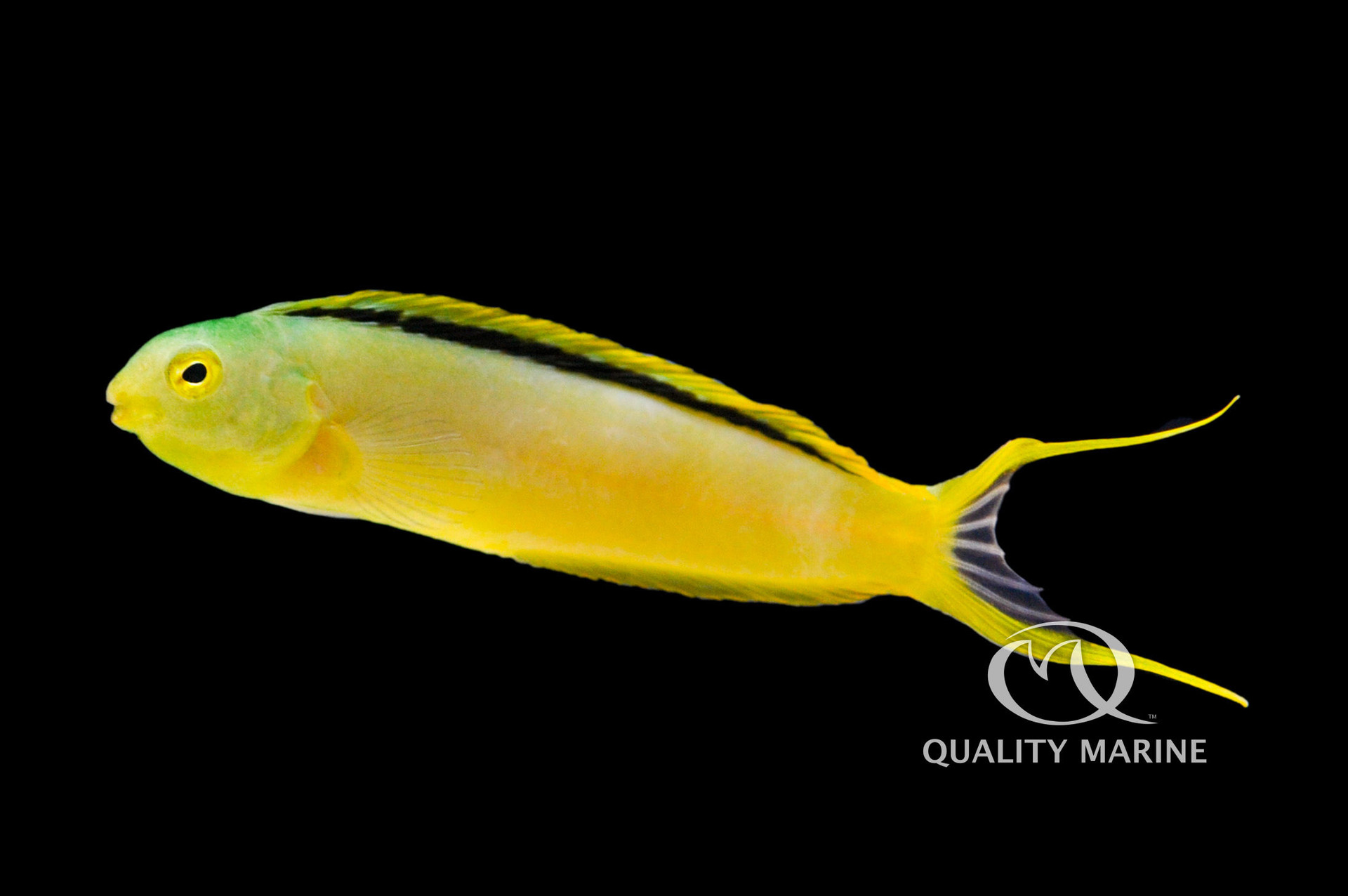Highly Underrated Fish - The Tongan Canary Blenny

The Tongan Canary Blenny (Meiacanthus tongaensis) is a beautiful fish only found on the South Pacific island of Tonga. Being a fang blenny, Meiacanthus is a reference from Greek meaning “lesser thorn” describing its small fangs! (A note on fang blennies: fang blennies are technically venomous, and while still harmless to humans be careful when handling them as they will bite! I have collected and handled thousands of these fish and never had an issue, but it is surprising when they get you!) An upgraded version of the standard Canary Blenny (Meiacanthus oualanensis) they retain the bright yellow color and activity but add a long black stripe on the dorsal fin and a splash of bright green in their head area. A very active fish that will enjoy swimming in the open when not threatened, they can reach a reasonable size of at least 4-5”, with a truly exceptional fish maybe getting slightly longer.
Distribution and Habitat
M. tongaensis can be found in very shallow lagoon waters (warm, potentially affected by tides, only a few feet deep) or as deep as 70’. They will hide and rest in rock rubble and in the wild are frequently collected in areas with some coral rubble or reef structure to quickly dart into. As mentioned earlier, they are a species endemic to Tonga, which means they are only found in that one place. While this makes them rarer than the standard canary blenny the population in Tonga is robust and this is a very common fish on shallow reefs that can be sustainably collected!
Aquarium Requirements
A 30 to 40 gallon aquarium as a minimum will be a spacious home for a pair of these fish. They do like to live communally, forming pairs in the wild. A reef tank will help replicate their natural environment, but make sure that there are plenty of cracks and crevices for them to call home as this is their natural environment and will help them feel confident to stay out in the open. Larger reef rubble could also be used to create more small holes, especially for very small or young fish. Some fang blennies can nip at other tankmates, and very large or boisterous fish may scare them, but provided with an adequate habitat these fish should be swimming out in the open most of the day for you.
Feeding
These small fish are voracious eaters who can easily be converted to flake or frozen foods! In the wild they will swim into the current near sanctuary and wait for passing food particles. They have very small mouths, so that should be taken into account when choosing a food for them, however they will accept anything Mysis sized or smaller with gusto.
Breeding
While Meiacanthus tongaensis is not currently aquacultured, I have had them spawn in captivity for me, and it should be an attainable goal. Based on my observations they are cavity nesters (looking for a small cave or perhaps a small, secluded overhang) and the eggs are strongly adhesive. My approximately 4” female laid eggs on the top of a plastic hide with an opening slightly smaller than her total length. The young will go through a planktonic larval stage after hatching. A 30-40 gallon tank with suitable hides (sections of PVC pipe would work) would probably suffice to spawn these fish in captivity.
Conclusion
The Tongan Canary Blenny is a must have for any aquarist who loves active, hardy, bright colored fish while simultaneously wanting to stand out from the crowd. Being an endemic means that you wont see as many of these available as the Canary Blenny, but the coloration is worth the wait! Talk to your local LFS about getting in some sustainably collected Meiacanthus tongaensis from Quality Marine today!